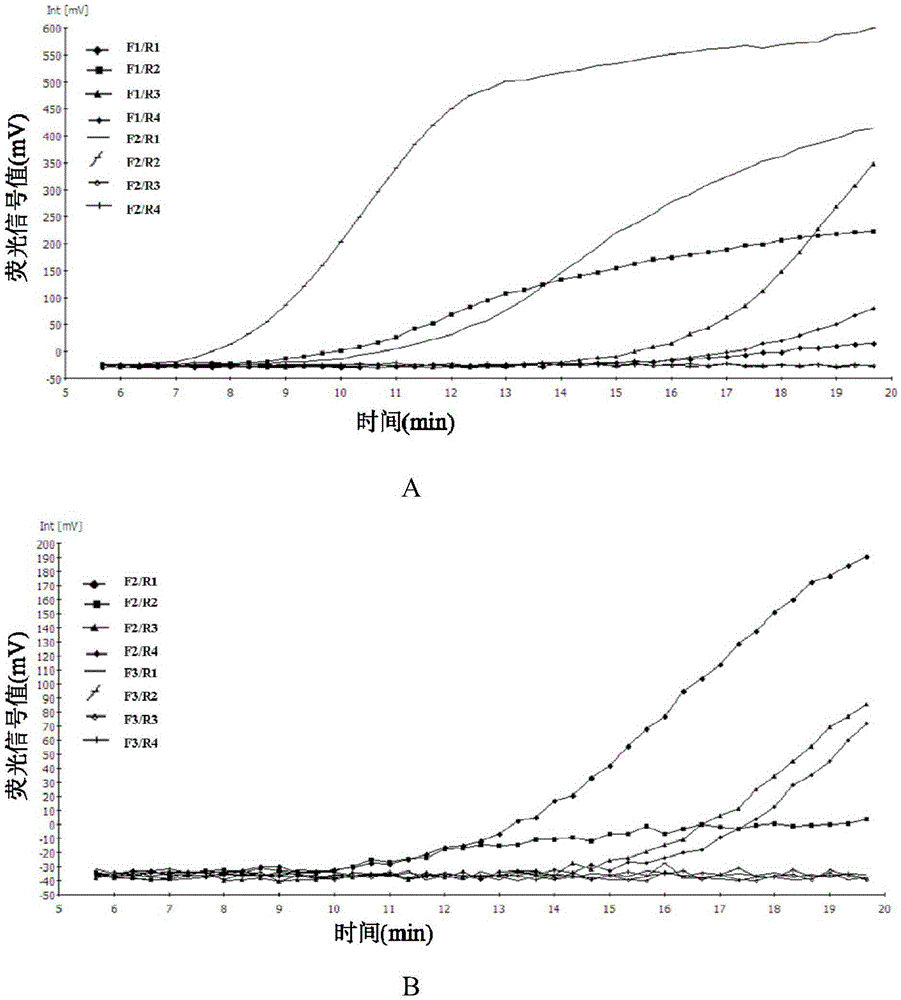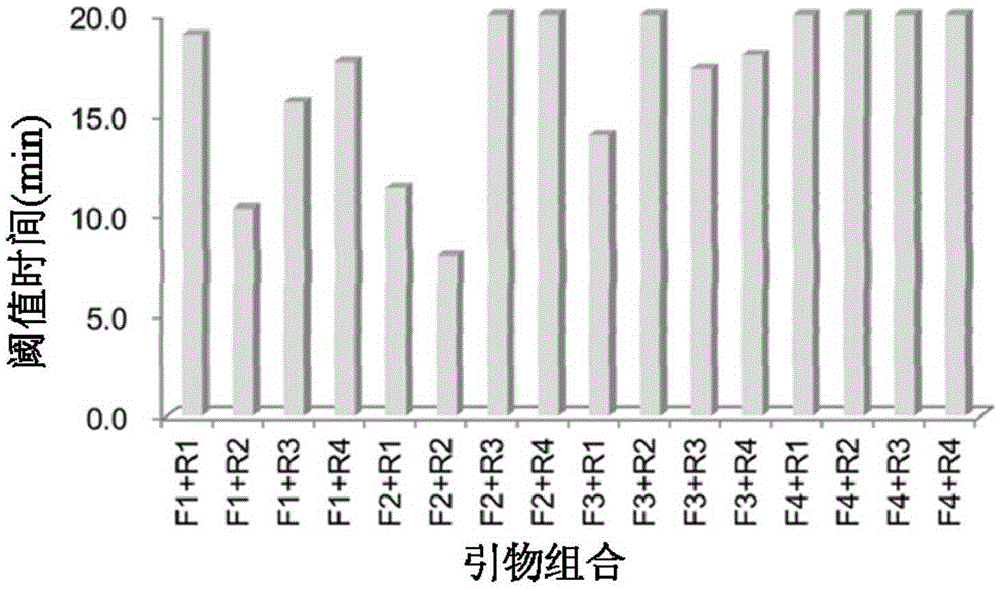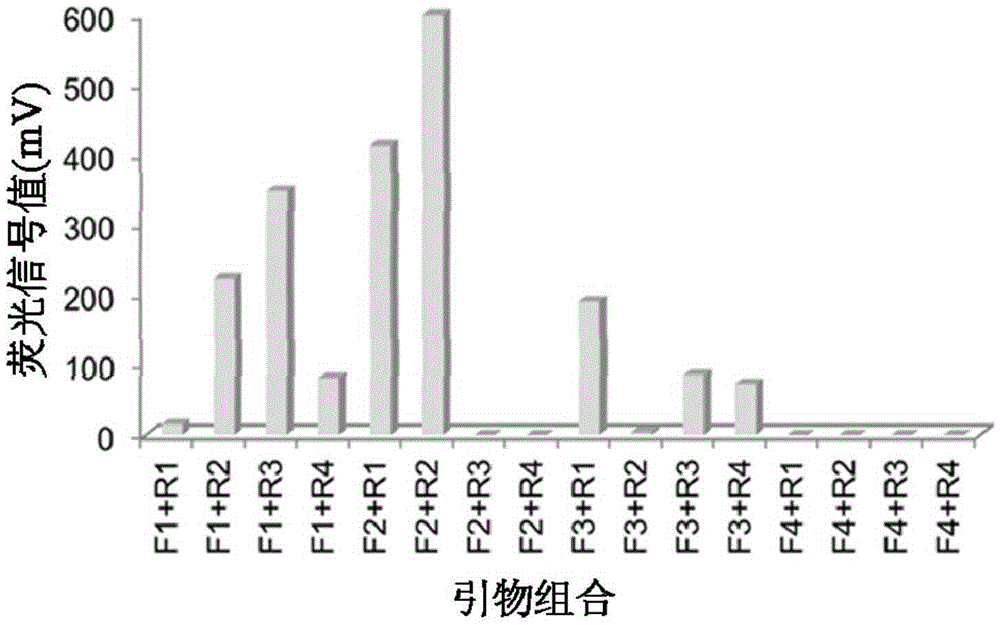RPA kit used for detecting Ebola virus, and special-purpose primers, probes, and applications of RPA kit
An Ebola virus and kit technology, which is applied in biochemical equipment and methods, DNA/RNA fragments, recombinant DNA technology, etc., to achieve the effects of strong specificity, shortened detection time, and high sensitivity
- Summary
- Abstract
- Description
- Claims
- Application Information
AI Technical Summary
Problems solved by technology
Method used
Image
Examples
Embodiment 1
[0043] Embodiment 1, Ebola virus RPA primer and probe design and screening
[0044] (1) Design of primers and probes
[0045] The inventor analyzed and determined through literature search that the conserved sequence in the Ebola virus NP gene is used as the target gene in the present invention. The known target gene sequence, ie the oligonucleotide sequence shown in SEQ ID NO.: 1, was obtained from the NCBI database. According to the RPA primer and probe design principles, 8 primers and 1 probe were designed, as shown in Table 1.
[0046] Table 1 Primers and probes
[0047]
[0048] (2) Primer screening
[0049] Artificially synthesize a positive plasmid containing the Ebola NP gene sequence, use this plasmid as a template, comprehensively combine primers and probes, and perform RPA detection respectively, and use the cumulative fluorescence intensity of the reaction and detection time as indicators to screen out the sensitivity The highest primer-probe combination for...
Embodiment 2
[0059] Embodiment 2: Sensitivity evaluation of RPA detection
[0060] The positive plasmid was serially diluted 10 times to 10 7 To a series of different concentrations such as 10 copies / microliter, 1 μL was added to the RPA reaction system described in Example 1, and the screened primer combination EBO-RPA-F2 / R2 was used to perform RPA detection on the above templates with different copy numbers. Each well was repeated 8 times, and the sensitivity of RPA detection was calculated using Prism software with the molecular copy number and detection time as parameters.
[0061] The result is shown in the figure. Figure 4A It is the real-time amplification curve diagram of different copy numbers, the abscissa is time, and the ordinate is the fluorescence signal value; Figure 4B The semi-logarithmic line graph of the sensitivity of RPA to detect Ebola virus, the abscissa is the copy number, and the ordinate is the threshold time. It can be seen from the figure that the detection...
Embodiment 3
[0062] Embodiment 3: The specificity evaluation that RPA detects
[0063] In the specificity evaluation, influenza virus and adenovirus were used as controls to determine the specificity of the RPA detection method of the present invention.
[0064] The influenza virus RNA and the DNA of the adenovirus were extracted, and RPA detection was carried out respectively, and the adenovirus DNA was detected by RPA according to the method in Example 2; the influenza virus RNA was detected using the following 50 μL RT-RPA system: each 2 μL (10 μmol / L), probe 0.5 μL (10 μmol / L), RNA template 1 μL, RNase inhibitor 0.5 μL, deionized water 12 μL and 29.5 μL buffer into a 0.2 mL TwistAmpRTexo reaction tube containing lyophilized enzyme powder. Then add 2.5 μL of magnesium acetate solution to the lids of all the reaction tubes, mix well and immediately put it into the RPA fluorescence detector for real-time monitoring, and react at 40°C for 20 minutes.
[0065] Results No amplification cur...
PUM
 Login to View More
Login to View More Abstract
Description
Claims
Application Information
 Login to View More
Login to View More - R&D
- Intellectual Property
- Life Sciences
- Materials
- Tech Scout
- Unparalleled Data Quality
- Higher Quality Content
- 60% Fewer Hallucinations
Browse by: Latest US Patents, China's latest patents, Technical Efficacy Thesaurus, Application Domain, Technology Topic, Popular Technical Reports.
© 2025 PatSnap. All rights reserved.Legal|Privacy policy|Modern Slavery Act Transparency Statement|Sitemap|About US| Contact US: help@patsnap.com



